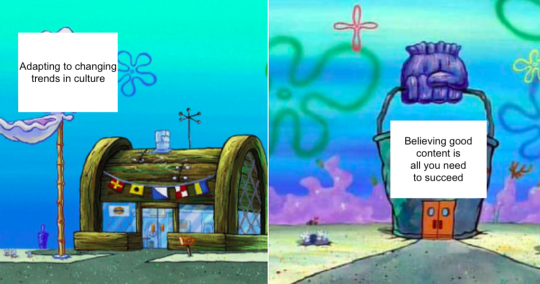Let’s face it: There is too much content. Try as we writers might to believe our work the best, there is no denying the seemingly endless entertainment options vying the finite amount of time people have in the day to day lives. Watching a video or listening to a podcast may take longer than reading an article, but some consumers see it as being better because both videos and podcasts allow for multi-tasking. It is not hard to listen to a conversation and work at the same time, but reading three-thousand words on an artist who will likely appear on a podcast or release new music soon is another story. Reading requires focused attention, and that is in increasingly limited supply in 2018.
Great up and coming artists are a dime a dozen, but great up and coming artists who can attract and hold consumers’ attention long enough to click a link, let alone read an article are far rarer. Even rarer still are publishers who see coverage of smaller acts as something worthy of their time or funding. There is a discussion to be had as to why this is bad for everyone, including the publisher, but for now, let’s focus on the conversation at hand.
In writing about an up and coming artist, you are hoping to reach two audiences: Established fans and curious consumers. The former will likely share your story, but they’re not as likely to click unless promised something exclusive or otherwise new. The latter will most likely only click if the name sounds familiar or something about the post itself stands out. The trick is in being unique while simultaneously following the lead of what is already popular in culture. For example, memes.
You cannot guarantee how many times the publisher will share your content, but you can tweet all you want through your account. Before sharing your story, take some time to craft clever and original memes inspired by the artist from your article. Do not mention the story, but instead stick to the established joke format used by every other person on the internet. Whenever possible, mention the artist, but only if it makes sense in the context of the meme. If it does not, you can always tag the artist as being in the associated photo.
Taking memes seriously as marketing tools may seem silly or foolish, but in the world of social media memes are a cultural currency that holds immense power, especially among young consumers. A great meme will attract shares and retweets, which in turn promote the artist and your identity as creator. You will receive followers, which may or may not abandon you later, as well as some brief fact time with countless people familiar with the band you are strategically promoting through meme creation.
With a little bit of luck, the memes you create will go viral amongst the artist’s already established fanbase. That may mean ten shares or ten-thousand, but know that every single one counts. The engagement generated by your original content will help to integrate you and your work as being a part of the fan community and not something produced by an outsider hoping to inspire a quick spike in traffic. That familiarity is priceless because it is what will ultimately drive clicks and shares of your story. Every artist community may be different, but the golden rules amongst them all is that fans support fans. Be one, and the rest will have your back.
Here’s an example:
Two weeks before covering up and coming pop-punk group Hot Mulligan I began drafting ideas for memes and similarly shareable content related to the band and their upcoming album, Pilot. It was around this time that two new memes started to circulate online, including what is now known as ‘Savage Patrick.’ The meme, which uses a photo of Patrick Star from Spongebob Squarepants, is used to express a ‘savage’ comment or behavior. In reviewing the lyrics to Hot Mulligan’s then-current single, “All You Wanted By Michelle Branch,” I discovered a line that seemed to fit this idea perfectly. The resulting creation was this:

A few days later, I created another meme, this one borrowing from a viral 2-image series known as the “Sleep On” meme. That meme performed even better than the one before it. It looks like this:

Both Hot Mulligan and their label shared each tweet, as well as several band members through their accounts. Fans soon followed suit.
When my article was published a days later, I returned to those two memes and added links to my story through threaded tweets. As the shares continued, so did exposure to my article. Additionally, several accounts that had followed me in the wake of the memes engaged with tweets about the post without needing to see the threads. The fan community recognized my posts as being from someone they knew to be familiar with the group they loved, and they didn’t think twice to help a fellow fan spread the word.

If all this wasn’t enough, it’s worth noting that both Hot Mulligan and their label appreciated the extra content I created. As silly as it sounds, a meme can often reach more people than a video or a song link, and a great meme shared by passionate fans can do more to encourage engagement with unfamiliar talent than all the well-written words in unread articles ever could.
Journalism is here to stay. Memes, for better or worse, are here to stay as well. Embrace them, master them, and then use them to further your readership. Even if you fail to create a significant surge in traffic you will undoubtedly attract more followers and, in time, those connections will help to grow your audience as a whole. It’s all part of the evolution of this industry. Adaptation is not an option, but a requirement. Don’t wait — create.

